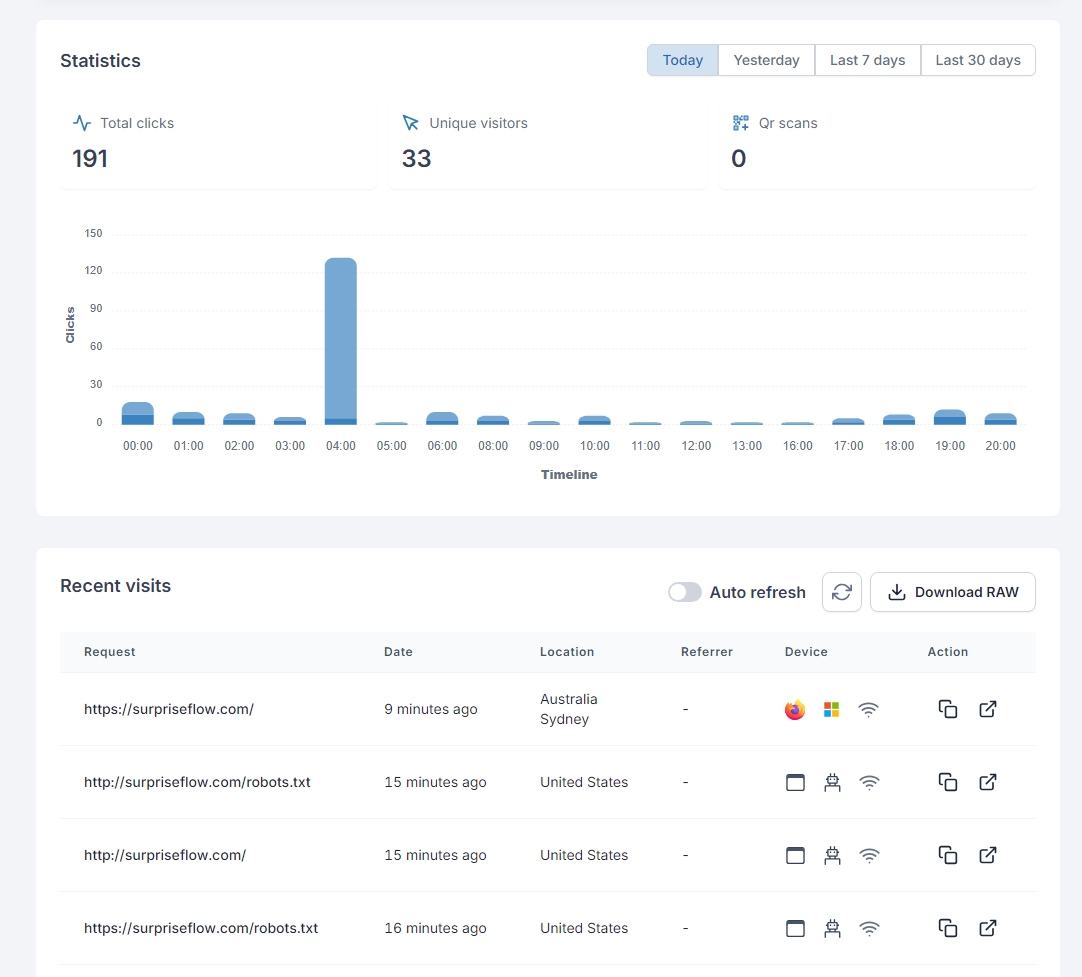Manage Redirects
Take control of your redirect infrastructure with powerful management tools and real-time updates.

Search and Filter
Access and organize your redirects with powerful search capabilities.
- Global Search: Find any redirect instantly with comprehensive search across URLs, tags, and descriptions
- Smart Filters: Filter redirects by status, type, creation date, or performance metrics
- Bulk Selection: Select and manage multiple redirects simultaneously for efficient operations

Status Management
Keep your redirects organized and up to date.

- Path Parameters: Maintain URL parameters and path structures in your redirects automatically
- Quick Actions: Enable, disable, or pause redirects with a single click
- Version History: Track changes and updates with detailed revision history
Bulk Operations
Efficiently manage multiple redirects at once.
- Batch Updates: Modify multiple redirects simultaneously with bulk edit capabilities
- Mass Actions: Apply actions like enable/disable, delete, or tag to multiple redirects at once
- Export Options: Download redirect data in various formats for backup or analysis

Performance Tracking
Monitor and optimize your redirect performance.

- Usage Statistics: Track redirect usage patterns and response times
- Error Monitoring: Identify and troubleshoot failed redirects quickly
- Health Checks: Regular automated checks ensure your redirects are working properly
Tag Management
Keep your redirects organized with a flexible tagging system. Create custom tags to categorize and filter your redirects, making it easy to find and manage related URLs. Tags can be added during creation, bulk-updated across multiple redirects, and used as quick filters in your dashboard.

Why Our Customers Love RedirHub

InSearchOf

MarketedPotential
Chris Panton
Frequently asked questions
What is a URL redirect?
A URL redirect, also known as URL forwarding, is a technique used to send users from one URL to another automatically. It’s commonly used for website migrations, marketing campaigns, and fixing broken links.
How do I redirect a URL?
You can redirect a URL by configuring your server, using a redirection service like RedirHub, or adding redirect rules through your website’s CMS or hosting provider.
What is a URL redirection service?
A URL redirection service simplifies the process of managing and tracking redirects, allowing you to create custom short links, analyze traffic, and optimize user flows effortlessly.
What are examples of URL redirection?
Examples include:
- Redirecting oldwebsite.com to newwebsite.com.
- Redirecting example.com/page to example.com/new-page.
- Shortened links like bit.ly/redirect redirecting to a full URL.
What is the best way to manage URL redirects?
Using a dedicated tool like RedirHub ensures that redirects are efficient, properly tracked, and easily managed without technical complexity.
How do I create a custom redirect URL?
You can create a custom redirect URL through RedirHub by setting up a branded domain, choosing a short path, and linking it to your destination URL.
Why is HTTPS better than HTTP for redirects?
HTTPS ensures secure data transmission between your users and the destination server, enhancing trust and protecting against data interception.
Why are URL redirects important?
Redirects are crucial for maintaining SEO rankings, preserving link equity, ensuring a seamless user experience, and avoiding broken links.
What is the difference between URL and HTTP redirects?
A URL redirect refers to sending users from one address to another, while HTTP redirects specify how servers should handle redirection using response codes (e.g., 301, 302).
Why is the ‘www’ prefix not commonly used anymore?
Modern websites often use naked domains (e.g., example.com) for simplicity and better branding, though www is still valid and can be redirected accordingly.
What is the difference between a URL and a URI?
A URL (Uniform Resource Locator) specifies the address of a resource on the internet, while a URI (Uniform Resource Identifier) is a broader term that includes URLs and URNs (names).
Can URL redirects affect SEO?
Yes, improper redirects can harm SEO. Use 301 redirects for permanent changes and 302 for temporary ones to ensure search engines index your content correctly.
What tools are best for managing large-scale URL redirects?
Tools like RedirHub provide advanced management capabilities, including bulk redirect handling, analytics, and automation for high-volume projects.
